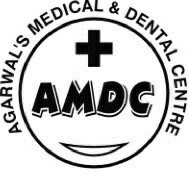
This is your website preview.
Currently it only shows your basic business info. Start adding relevant business details such as description, images and products or services to gain your customers attention by using Boost 360 android app / iOS App / web portal.
Dyslipidaemia (Cholesterol) management
Managing dyslipidemia, which involves an abnormal level of lipids (cholesterol and/or triglycerides) in the blood, is crucial for reducing the risk of cardiovascular diseases. Here are key strategies for managing dyslipidemia: Lifestyle Modifications: Healthy Diet: Adopt a heart-healthy diet that includes fruits, vegetables, whole grains, lean proteins, and low-fat dairy. Limit saturated and trans fats, cholesterol, and sodium. Omega-3 Fatty Acids: Include sources of omega-3 fatty acids, such as fatty fish (salmon, mackerel), flaxseeds, chia seeds, and walnuts, which can help lower triglycerides. Soluble Fiber: Increase soluble fiber intake from foods like oats, beans, lentils, fruits, and vegetables, as it can help lower LDL (low-density lipoprotein) cholesterol. Limit Processed Foods: Reduce consumption of processed and fried foods, which often contain unhealthy fats. Regular Exercise: Engage in regular physical activity. Aim for at least 150 minutes of moderate-intensity aerobic exercise or 75 minutes of vigorous-intensity exercise per week. Maintain a Healthy Weight: Achieve and maintain a healthy weight. Losing excess weight can improve lipid profiles. Limit Alcohol: If you consume alcohol, do so in moderation. Excessive alcohol intake can raise triglyceride levels. Medications: Statins: Statins are commonly prescribed to lower LDL cholesterol. They also have some positive effects on triglycerides and can modestly increase HDL (high-density lipoprotein) cholesterol. Ezetimibe: Ezetimibe can be used alone or in combination with statins to further lower LDL cholesterol. PCSK9 Inhibitors: PCSK9 inhibitors are injectable medications that can lower LDL cholesterol levels, particularly in individuals with familial hypercholesterolemia. Fibrates: Fibrates are medications that can lower triglyceride levels and increase HDL cholesterol. Niacin (Vitamin B3): Niacin can be used to lower LDL cholesterol and raise HDL cholesterol. However, its use is less common due to potential side effects. Monitoring and Follow-Up: Regular Blood Tests: Monitor lipid levels regularly to assess the effectiveness of lifestyle changes and medications. Adjustments to Treatment: Treatment plans may need to be adjusted based on changes in lipid levels and overall health. Risk Assessment: Consider overall cardiovascular risk factors when determining the appropriate treatment approach. Lifestyle Habits for Long-Term Management: Quit Smoking: If you smoke, quit. Smoking lowers HDL cholesterol and damages blood vessels, increasing the risk of cardiovascular disease. Regular Checkups: Schedule regular checkups with healthcare providers to assess cardiovascular health and discuss any concerns. Patient Education: Educate individuals about the importance of adherence to medications, lifestyle modifications, and the long-term management of dyslipidemia. Address Other Risk Factors: Manage other cardiovascular risk factors such as hypertension and diabetes, as they can influence lipid levels.
We Provide Best Medical Service
Online appointment booking is not available right now.
Appointment Confirmed
Your appointment ID is
| Doctor Name: | |
| Date & Time: | |
| Contact: | +918048052859 |
| Address: | F-01/02, Gokul Heaven, Thakur Complex, Kandivali East, Mumbai - 400101 |
| Appointment fee: | |
| Payment mode: | |
| Join video call at: |
Thanks for choosing us.Your appointment details has been shared on your mobile number as well. Please arrive atleast 10 minutes ahead of the scheduled time.
Success
